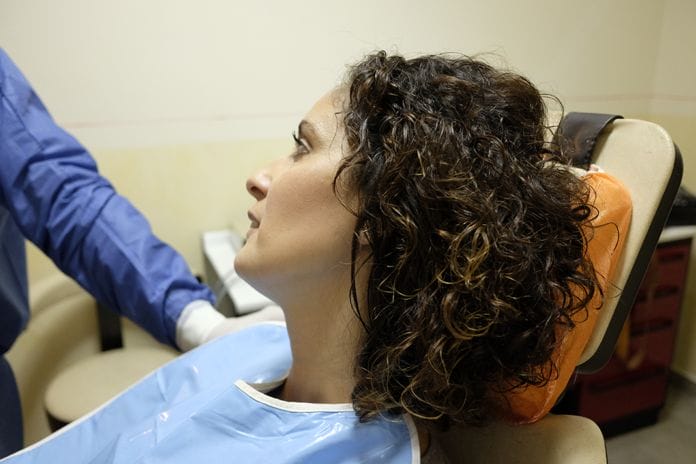We have all had that patient, the one that is terrified of being at the dentist. They look terrified from the moment you call their name and ask them to head to the back. These overwhelmed patients, in all their fear, don’t realize how their stress can affect you, as a clinician. How do you handle them? These patients are among the most difficult types to handle. Occasionally, they might cry and panic, or even walk out before treatment is completed. It is so hard for us to understand dental apprehension because we know, “We are just trying to help.”
Think, for just a minute, about a time that you may have been afraid at your own doctor’s appointment. For me, it was when I gave birth to my son. The entire day went wrong, in every element of the delivery process. After 13 hours of labor, I still had no progression. To make the situations worse, my son was in distress. My doctor told me I had to have an emergency C-section. This was the last thing I wanted to hear after the traumatic day I had already experienced. As they wheeled me in to have the surgery, I was in a panic. I was crying and shaking; I couldn’t focus on anything but the fear I was feeling. Six years later, I still remember that day, because my son was finally here, but also because of the emotions tied to that moment. It wasn’t my husband that calmed me or my OB that calmed me; it was the wonderful anesthesiologist simply taking a moment to talk calmly to me and help me get my head right. (The strong medications did help – don’t get me wrong.) Overall though, I found relief in his kind words.
Fear is a very strong emotion, and it clouds our judgment. Because of this, one of the most difficult things about apprehensive patients is effective communication. It is easy, in our frustration and rushed day, to feel annoyed and short with these patients. Keep in mind that we, as the providers have the power. We can help ease their anxiety and make them comfortable, or in turn, our response can exacerbate the problem. How can we effectively manage these patients? Effective listening and communication is the key.
Patience is vital! Always, regardless of the patient you’re seeing, take the time to briefly introduce yourself. Perhaps even shake their hand. This seems minute, but that simple introduction makes a world of difference. Take the time to start a dialogue. Questions such as, “What frightens you; did a previous experience cause you to feel this way; or how can I help make you more comfortable;” can be very effective in gaining insight into the patient’s psyche.
Sometimes walking the patient through the procedure helps with a patients’ apprehension. Begin by explaining how your appointment will go. As you’re changing tasks, explain what will happen next. Take the time to talk about why you’re doing it. Educating these patients helps two-fold. The more we know about something, the less frightening it seems to be. Also, patients can appreciate the time and effort we are spending on them. Taking the time to educate can help patients understand the importance of preventive dental care better and also leads to trust.
Be engaged with your patient. Take the time to face them and make eye contact. Pause often and give them a chance to relax. Be aware of your tone of voice and body language. Calculated control of your voice and body language can be very calming and reassuring to the patient. Answer all questions and take time with each patient as an individual.
I know with our busy schedules this isn’t always easy and it can be draining on us as providers. Keep in mind, you’re not only representing your hygiene community, but your office, and more importantly the doctor(s) you work for. Often patients will pass judgment on an office before they even meet the doctor. The more confidence we show in ourselves and dentists helps build trust and the more at ease our patients will feel.
Again, think back to a moment when you were afraid. Put yourself in these patients’ shoes. It might take a little more time and effort easing a patient’s apprehension, but with small gestures, it can and should be done. Most importantly, it just might mean the world to the patient; that’s important because each individual patient, apprehensive or not, matters.












